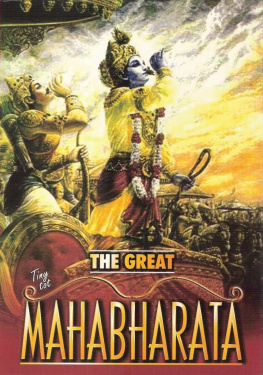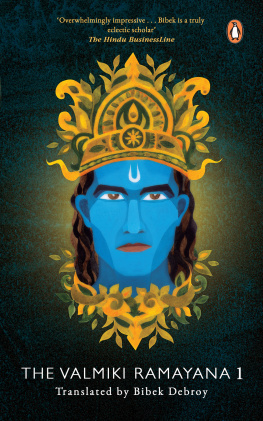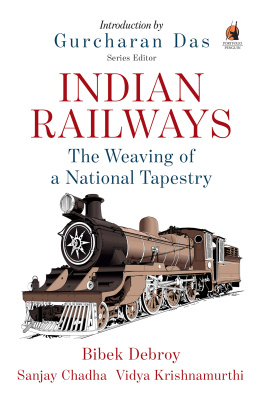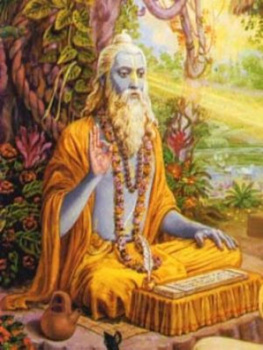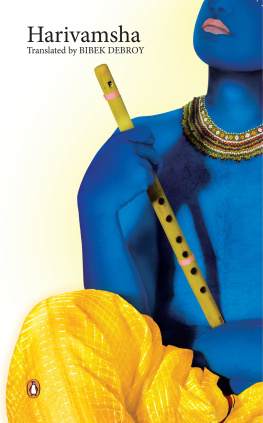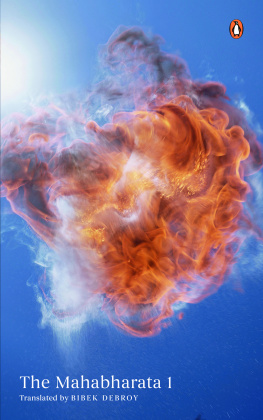Bibek Debroy - Mahabharata, Vol. 3
Here you can read online Bibek Debroy - Mahabharata, Vol. 3 full text of the book (entire story) in english for free. Download pdf and epub, get meaning, cover and reviews about this ebook. year: 0, genre: Children. Description of the work, (preface) as well as reviews are available. Best literature library LitArk.com created for fans of good reading and offers a wide selection of genres:
Romance novel
Science fiction
Adventure
Detective
Science
History
Home and family
Prose
Art
Politics
Computer
Non-fiction
Religion
Business
Children
Humor
Choose a favorite category and find really read worthwhile books. Enjoy immersion in the world of imagination, feel the emotions of the characters or learn something new for yourself, make an fascinating discovery.

- Book:Mahabharata, Vol. 3
- Author:
- Genre:
- Year:0
- Rating:5 / 5
- Favourites:Add to favourites
- Your mark:
- 100
- 1
- 2
- 3
- 4
- 5
Mahabharata, Vol. 3: summary, description and annotation
We offer to read an annotation, description, summary or preface (depends on what the author of the book "Mahabharata, Vol. 3" wrote himself). If you haven't found the necessary information about the book — write in the comments, we will try to find it.
Mahabharata, Vol. 3 — read online for free the complete book (whole text) full work
Below is the text of the book, divided by pages. System saving the place of the last page read, allows you to conveniently read the book "Mahabharata, Vol. 3" online for free, without having to search again every time where you left off. Put a bookmark, and you can go to the page where you finished reading at any time.
Font size:
Interval:
Bookmark:

Volume 3
(Sections 33 to 44)
Translated by
BIBEK DEBROY

PENGUIN BOOKS
SECTION THIRTY-THREE
TIRTHA-YATRA PARVA
Journey to the sacred places of pilgrimage
SECTION THIRTY-FOUR
JATASURA-VADHA PARVA
Slaying of the demon named Jatasura
SECTION THIRTY-FIVE
YAKSHA-YUDDHA PARVA
Bhima fights with yakshas and rakshasas and kills the rakshasa Maniman
SECTION THIRTY-SIX
AJAGARA PARVA
Bhima is grasped by Nahusha in the form of a boa; a dialogue between Yudhishthira and Nahusha
SECTION THIRTY-SEVEN
MARKANDEYA SAMASYA PARVA
A long conversation between the Pandavas and Markandeya
SECTION THIRTY-EIGHT
DROUPADISATYABHAMA-SAMBADA PARVA
A conversation between Droupadi and Satyabhama
SECTION THIRTY-NINE
GHOSHA YATRA PARVA
An expedition undertaken by the Kouravas to see the ghoshas in Dvaitavana, where the Pandavas are residing
SECTION FORTY
MRIGA-SVAPNA-BHAYA PARVA
Deer appear to Yudhishthira in a dream and tell him about their fears
SECTION FORTY-ONE
VRIHI-DROUNIKA PARVA
The story of Mudgala, who lived on a measure of rice and was generous enough to give it away
SECTION FORTY-TWO
DROUPADI HARANA PARVA
Droupadis abduction by Jayadratha
SECTION FORTY-THREE
KUNDALA-AHARANA PARVA
Indra asks Karna for his natural armour and earrings that make him invincible; in return, gives Karna an invincible spear
SECTION FORTY-FOUR
ARANEYA PARVA
Failing to answer a yakshas questions, Nakula, Sahadeva, Arjuna and Bhima are killed, but are restored to life when Yudhishthira answers the questions correctly
Bibek Debroy is an economist and is Research Professor (Centre of Policy Research) and Contributing Editor (Indian Express group). He has worked in universities, research institutes, industry and for the government. He has published books, papers and popular articles in economics. But he has also published in Indology and translated (into English) the Vedas, the Puranas, the Upanishads and the Gita (Penguin India, 2005). His book Sarama and her Children: The Dog in Indian Myth (Penguin India, 2008) splices his interest in Hinduism with his love for dogs. He is currently translating the remaining volumes of the unabridged Mahabharata.
The modernization of language is visible, its easier on the mind, through expressions that are somewhat familiar. The detailing of the story is intact, the varying tempo maintained, with no deviations from the original. The short introduction reflects a brilliant mind. For those who passionately love the Mahabharata and want to explore it to its depths, Debroys translation offers great promise in the first volume.
Hindustan Times
[Debroy] has really carved out a niche for himself in crafting and presenting a translation of the Mahabharata The book takes us on a great journey with admirable ease.
The Indian Express
The first thing that appeals to one is the simplicity with which Debroy has been able to express himself and infuse the right kind of meanings Considering that Sanskrit is not the simplest of languages to translate a text from, Debroy exhibits his deep understanding and appreciation of the medium.
The Hindu
Overwhelmingly impressive Bibek is a truly eclectic scholar.
Business Line
Debroys lucid and nuanced retelling of the original makes the masterpiece even more enjoyably accessible.
Open
The quality of translation is excellent. The lucid language makes it a pleasure to read the various stories, digressions and parables.
The Tribune
Extremely well-organized, and has a substantial and helpful Introduction, plot summaries and notes. The volume is a beautiful example of a well thought-out layout which makes for much easier reading.
The Book Review
The dispassionate vision [Debroy] brings to this endeavour will surely earn him merit in the three worlds.
Mail Today
This [second] volume, as voluminous as the first one, is expectedly as scholarly Like the earlier volume, the whole book is an easy read.
The Hindu
Debroys is not the only English translation available in the market, but where he scores and others fail is that his is the closest rendering of the original text in modern English without unduly complicating the readers understanding of the epic.
Business Standard
For Suparna
Ardha bhry manuyasya bhry rehatama sakh
Bhry mulam trivargasya bhry mitram mariyata
Mahabharata (1/68/40)
Bharata/Puru Lineage




The Hindu tradition has an amazingly large corpus of religious texts, spanning Vedas, Vedanta (brahmanas, smritis, Puranas, dharmashastras and itihasa. For most of these texts, especially if one excludes classical Sanskrit literature, we dont quite know when they were composed and by whom, not that one is looking for single authors. Some of the minor Puranas (Upa Purana) are of later vintage. For instance, the Bhavishya Purana (which is often listed as a major Purana or Maha Purana) mentions Queen Victoria.
In the listing of the corpus above figures itihasa, translated into English as history. History doesnt entirely capture the nuance of itihasa, which is better translated as this is indeed what happened. Itihasa isnt myth or fiction. It is a chronicle of what happened; it is fact. Or so runs the belief. And itihasa consists of Indias two major epics, the Ramayana and the Mahabharata. The former is believed to have been composed as poetry and the latter as prose. This isnt quite correct. The Ramayana has segments in prose and the Mahabharata has segments in poetry. Itihasa doesnt quite belong to the category of religious texts in a way that the Vedas and Vedanta are religious. However, the dividing line between what is religious and what is not is fuzzy. After all, itihasa is also about attaining the objectives of dharma, and the Mahabharata includes Hinduisms most important spiritual textthe Bhagavad Gita.
The epics are not part of the shruti tradition. That tradition is like revelation, without any composer. The epics are part of the smriti tradition. At the time they were composed, there was no question of texts being written down. They were recited, heard, memorized and passed down through the generations. But the smriti tradition had composers. The Ramayana was composed by Valmiki, regarded as the first poet or kavi
Font size:
Interval:
Bookmark:
Similar books «Mahabharata, Vol. 3»
Look at similar books to Mahabharata, Vol. 3. We have selected literature similar in name and meaning in the hope of providing readers with more options to find new, interesting, not yet read works.
Discussion, reviews of the book Mahabharata, Vol. 3 and just readers' own opinions. Leave your comments, write what you think about the work, its meaning or the main characters. Specify what exactly you liked and what you didn't like, and why you think so.


